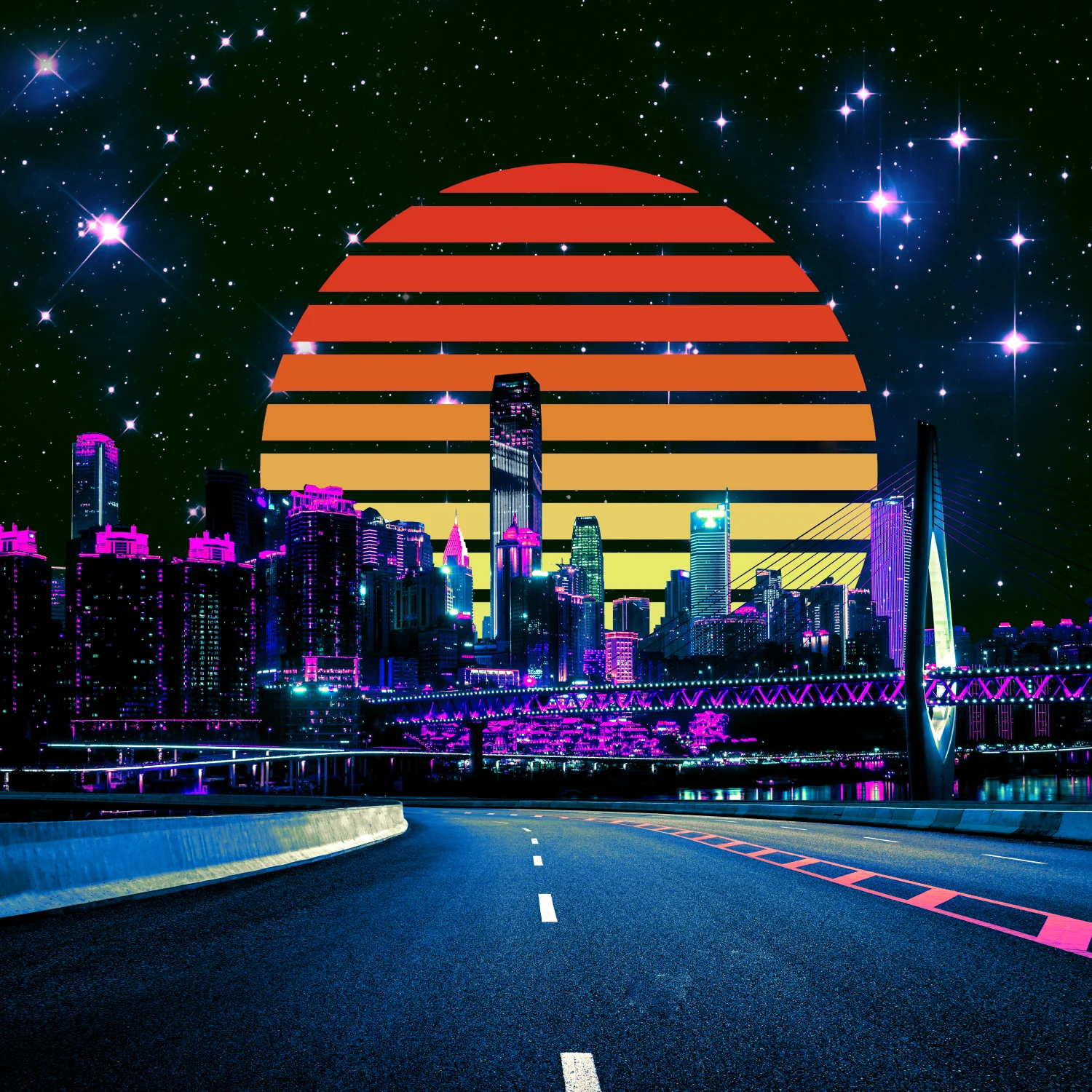Synthwave is an aesthetic which seeks to modernize the visual styles contemporary to the 1980s and ’90s. It is unique in that along with a distinct visual style, synthwave has an accompanying style of music (of which synthwave-style artwork often serves as the album cover). It prominently features shades of neon pink and cyan, retro-style computer generated graphics, grid lines, and often stylized depictions of sunsets. It is also known as Neon-noir, Outrun, and Retrowave.

The Visual Style



The Musical Style
Synthwave draws heavily from ’80s Synthpop music from bands like Depeche Mode and Pet Shop Boys, but it would be irresponsible to label these contemporary bands as synthwave. The distinction is most likely that synthwave, by definition, seeks to emulate the music of the 1980s out of reverence, or at the very least because of the aesthetic appeal. Starting in the early 2000s with musicians creating music that emulate film scores of the ’80s (especially Blade Runner), the genre has continued to increase in popularity to the point where there’s a 24-hour live stream on YouTube of synthwave music.

Sources
[1]. Featured image. Created by artist “visionsofelvedon”, obtained from https://artgrab.co/art/visionsofelvedon.


4 Comments. Leave new
Hey Josh, I really liked this post and aesthetic. Tron Legacy (2010) was one of my favorite movies growing up because of the use of this aesthetic. I liked how you pointed out the strong link between the viral art and its music counterparts. For more clarification I would ask whether the 80’s music is a different genre to the modern day synth wave or if it still counts as the same genre.
I love TRON Legacy! The soundtrack of that movie is awesome, and definitely has elements of synthwave. I feel that a very integral part of synthwave music is the element of nostalgia (whether the composer or listener lived through the ’80s or not) toward the ’80s/’90s and the idealized, even imagined versions of what those decades were actually like. While modern synthwave definitely attempts to emulate the music of that time, I don’t feel like music from that time period can also be considered “synthwave”.
I really like the synthwave aestetic and I think you did a good job of capturing the essence of it, giving a good overview of both visual and musical elements of the aestetic. You took the historical context, origins, and prominant featurs and made it equally informative for enthusiasts and newcomers.
To further give a better understanding of the aestetic however, is there a good comparison between what we see today and what we may have seen in the 80s? For example songs, is there something there we could see the contrast on how it has carried through the decades and also differed.
Hi Cannon, thanks for your comment. As far as the visual style goes, the synthwave aesthetic is probably more an “imagined” version of the ’80s/’90s than what those decades actually looked like. There were of course still elements of what would later become the synthwave aesthetic (I am reminded of the late ’90s/early 2000s swirly neon lights inside of Target stores…)
With the music, like I mentioned to Finbar, the modern synthwave music usually has that “nostalgia” feel to it. Also, synthwave music almost always is instrumental (no lyrics) whereas the synth pop music of the ’80s almost always has lyrics. Lyric-less music like TV commercials and film soundtracks of the ’80s also heavily inspired the genre.